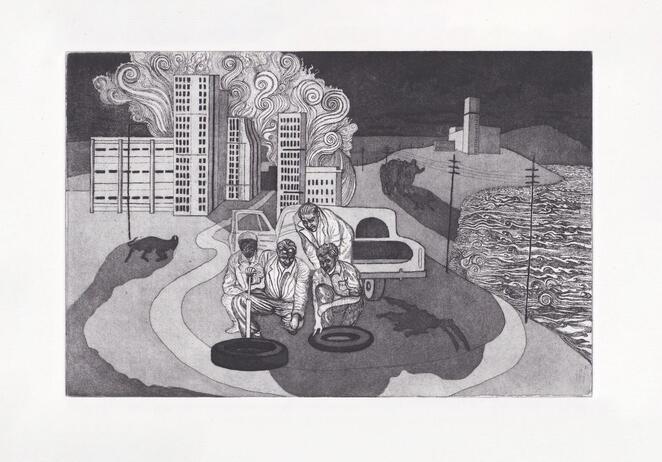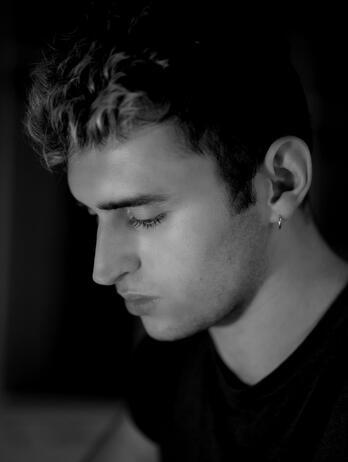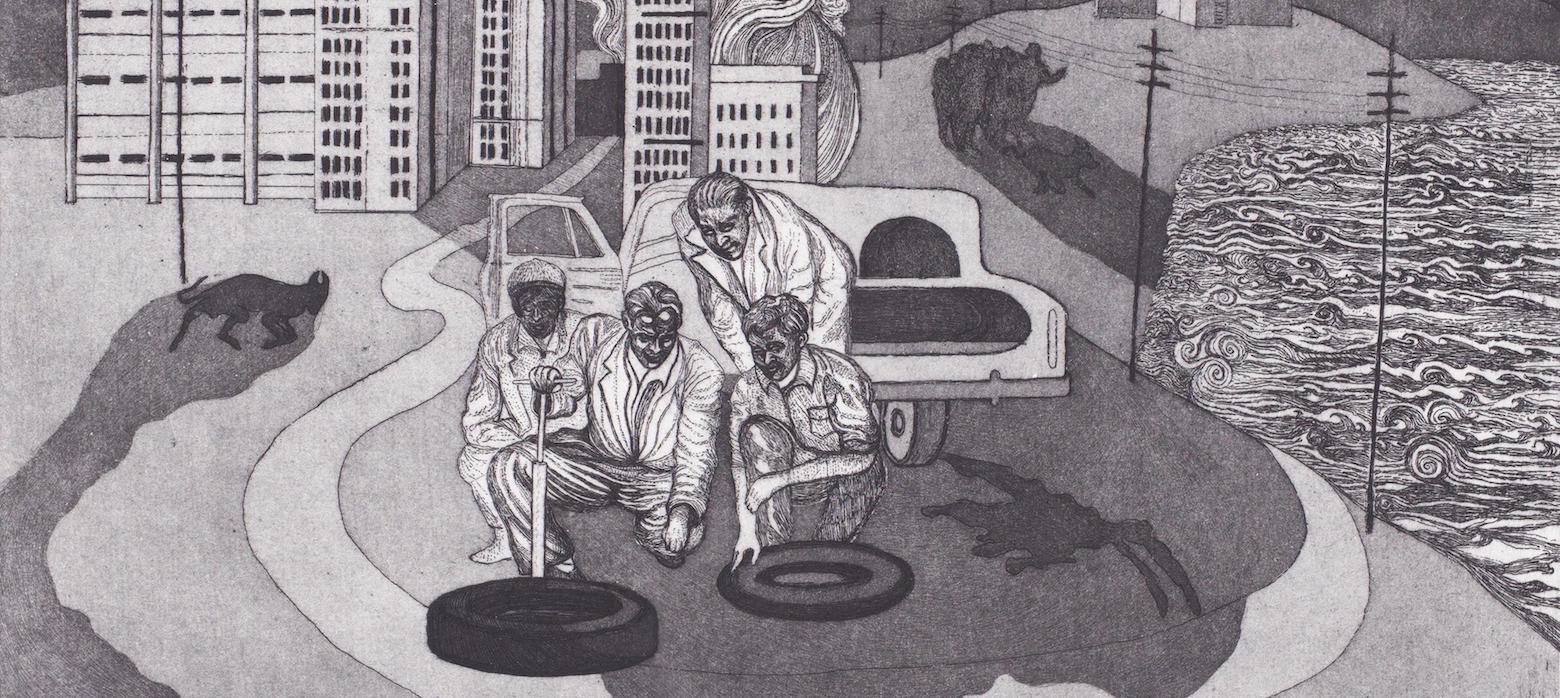William Lowry wins the Hermione Hammond Drawing Award 2025
/ New English Art Club
William Lowry wins the Hermione Hammond Drawing Award 2025
At the Private View of the NEAC Annual Exhibition on 11 June, emerging artist William Lowry (b. 2001) was announced as the winner of the Hermione Hammond Drawing Award 2025.
William won the £2,000 award for his work, Magi, on display at the NEAC Annual Exhibition until 21 June.
The Hermione Hammond Drawing Award was established in 2012 in memory of the artist Hermione Hammond (1910 - 2005) to encourage young artists to develop their drawing skills. The award has been offered at the annual exhibitions of the NEAC since 2020. Hermione Hammond herself exhibited with the NEAC between 1946 and 1962.
Here, William talks about his winning work, exhibiting with the New English Art Club, and more...

How would you describe your work in the exhibition?
Magi draws on the visual language of medieval prints to depict a dreamlike roadside ritual: figures gathered in quiet reverence around a car tyre, as if enacting a sacred rite. Set between a burning city and a restless sea, the etching transforms a mundane moment into a meditation on displacement, endurance, and collective ceremony. Echoing the dense symbolism and compressed space of early engravings, the image blurs the line between the contemporary and the mythic, the real and the allegorical.
Being included in this year’s exhibition feels like entering a conversation I’ve always wanted to be part of: one where observation, sensitivity, and a certain kind of quiet intensity are valued.
Tell us about your journey exhibiting with the NEAC so far.
This is my first time exhibiting with the NEAC, and it feels both surreal and deeply affirming. I’ve long admired the society’s commitment to figurative drawing—not just as a skill, but as a way of thinking and seeing. Being included in this year’s exhibition feels like entering a conversation I’ve always wanted to be part of: one where observation, sensitivity, and a certain kind of quiet intensity are valued. It’s a privilege to show work in this context, alongside so many artists whose practices resonate with mine in different and unexpected ways.

Tell us a little more about yourself and your practice.
My practice explores masculinity, desire, and memory through a language of myth, dystopia, and shifting landscapes. I’m especially interested in how place can act as emotional or psychological terrain—reflecting internal states, personal histories, or power structures.
I work across drawing, print, sculpture, and installation, using materials like biro, pencil, oil pastel, paint, and found industrial elements such as steel, aluminium, and polythene. I’m drawn to the contrast between delicate, precise mark-making and more raw, distressed materials. At the centre of many works are archetypal male figures—soldiers, athletes, lovers—shown in moments of play, vulnerability, or crisis. These figures often appear within gothic or neoclassical frameworks, caught in unstable or fragmented environments where their presence flickers or fades.
I’m influenced by votive traditions, postwar architecture, fairy tales, and artists like Goya and Dürer. Recently, I’ve been exploring how artworks— whether immersive installations or more intimate, talismanic pieces—can act as ritual spaces for memory, transformation, and reflection.
New English Art Club Annual Exhibition 2025
William's work is on display as part of the New English Art Club Annual Exhibition 2025. The exhibition runs from 12 to 21 June.
Photograph © the artist

